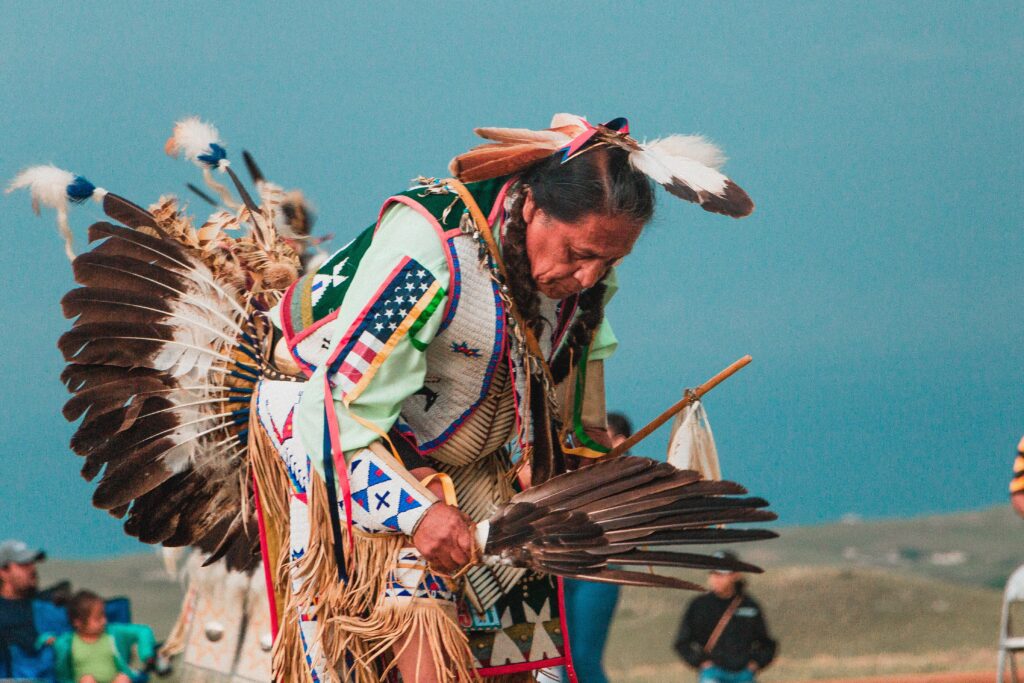Native American Heritage Month: Celebrating 8 Native American Activists

Image Credit: Andrew James @andrewjames
Written by Ava Callanan & Hella Grichi
November is Native American Heritage Month, this month is dedicated to Native Americans to highlight their contribution to the establishment and growth of the United States.
After many years of Native American Day in the 1800s onwards, this later received more recognition and push from the Native American people. On August 3rd 1990 President Bush declared November as National American Heritage Month. This month should be a time for those in the US and around the world to educate themselves on Native Americans and the rich and diverse culture and traditions of the Native American people and to raise awareness regarding the challenges of the Native Americans both historically and present day.
There are numerous events throughout the month in different parts of America that assist with this. At some local schools people were invited to wear red to represent Missing or Murdered Inidgenous Women or orange to represent residential school survivors as part of a movement within Indian Country.
In honour of this month, we would like to give a spotlight to Native Americans who have made or are making a difference.
- Elizabeth Peratrovich (1911-1958)
Elizabeth was a Native American Woman born in Petersburg, Alaska on July 4th, 1911. Elizabeth is known as one of the driving forces behind the U.S.’s first Anti-Discrimination Act of 1945. Elizabeth was a member of the Tlingit Nation and was fluent in both Tlingit and English. Throughout her youth she experienced discrimination at every turn due to the laws that enabled the mistreatment of Native Americans such as denying them access to facilities, making something as basic as a hospital treatment difficult to acquire. During WWII once again Elizaebth and her husband Roy were faced with discrimination in which an establishment did not cater to Natives, this sparked her campaign. They traveled around the States rounding up support from Native Americans to join in their fight. In 1945 their campaign succeed and resulted in the first Anti-Discrimination law in which “All citizens” would be entitled to full and equal enjoyment of facilities. Those found guilty of discrimination would face jail time or a fine.
- Geronimo (1829-1909)
Geronimo was an Apache Leader and medicine man. Geronimo was a fearless warrior and fought Mexicans and White Americans who threatened his people and tribe. Geronimo was born on 16th of June 1829 in the upper Gila River and was a member of the Bedonkohe subsection of the Chiricahua tribe of Apaches. In 1851 Mexican soldiers led by Colonel Jose Maria Carrasco murderd Geronimo’s wife, Alope, his mother and three children whilst attacking the family’s camp. After this, Geronimo claimed he heard a voice state that “No gun will ever kill you, I will take the bullets from the guns…and I will guide your arrows.” He devoted his life to avenging his family and tribe.
He spent years fighting those who hurt his people and in the end it took 5,000 U.S troops and 3,000 Mexicans to force Geronimo and his followers out of hiding in September 1886. He was the last Native American leader to surrender to the military.
- Wilma Mankiller (1945-2010)
Wilma was born on November 18th 1945 in Tahlequah, Oklahoma. She was born into the Cherokee nation and was one of eleven children. Wilma never felt like a victim of her circumstances in spite of growing up in what was considered poor conditions. She was pulled into the world of Social Activism after witnessing American Indians taking over the federal penitentiary in 1969 on Alcatraz. This event opened her eyes to awareness that needed to be raised for the rights of Native Americans. She became a director of Oakland’s Native American Youth Center, Wilma believed in the restoration of pride in Native Heritage and Culture. Wilma spearheaded many projects which focused on preventing the downward spiral of Native American youth, access to water and housing. Wilma was elected as the first female Principal Chief of the Cherokee Nation in 1985. Whilst she was in charge there was an improvement in education, housing and reduction in the infant mortality rate.
- Tom Goldtooth (1953-)
Tom Goldtooth was born on July 27th 1953 and is a well known Native American Activist. His activism centres around indigenous rights, environmental and climate crisis among others. Goldtooth was born in New Mexico near the Navajo Nation. Tom is the executive director of the Indigenous Environmental Network which was established in 1990 and is centred around addressing environmental and economic justice issues. He has a myriad of accomplishments under his belt as well as co-producing the award winning documentary, “Drumbeat for Mother Earth,” which highlighted the consequences of Indigenous nations being exposed to chemicals. Goldtooth was awarded the Gandhi Peace Award in 2015 and has been a driving force behind climate change.
- Autumn Peltier (2004 -)
Autumn Peltier is a Canadian water rights activist and is a trailblazer in global youth environmental activism. Autumn was born on September 27th, 2004 and is from the Wiikwemkoong First Nation in Ontario, Canada. Autumn has been an activist since she was 8 years old, she was made aware of the issues after witnessing lakes and rivers having “Toxic” water signs as a result of pipeline leaks and pollution. Autumn has spoken before the Canadian PM Justin Trudeau and addressed the United Nations General Assembly about the realities of water pollution and its harmful effects. She is known as a Water Warrior who fights for access to clean water for indigenous people across the world. She has been nominated for the International Children’s Peace Prize in 2017, 2018 & 2019.
- Nathan Philips (1954-)
Nathan Philips is a Native American Activist who was born on the 22nd of February 1954. He was born in Nebraska as part of the Omaha Nation. Philips was raised by a white Foster family and later began working on creating a care system run by Native Americans for Native American children. Philips works tirelessly to raise awareness of Native Americans and to encourage the appreciation of Native American culture and heritage. Philips is a former director of the Native Youth Alliance and was among those leading in the Standing Rock protests in 2016 and 2017. The Standing Rock protests were against the construction of an oil pipeline in North Dakota.
- Candace Linklater a.k.a. “Relentless Indigenous Woman”
(Photo Credit: Relentless Indigenous Woman Facebook Page)
Candace is the Executive Administrator for the Relentless Indigenous Woman page that started off as a small community and grew to count over 250.000 followers. She comes from a line of revolutionary leaders: her great-great grandfather was a signatory to Treaty 9, and her grandfather was a Chief that served for three terms. She is an educator, elected official and community volunteer – in short: a relentless and powerful indigenous woman.
She is an Illilew Cree from the Treaty 9 territory, where she grew up on the Moose Cree First Nation reservation. She was an elementary teacher there, then proceeded to obtain a policy position advocating for First Nations education and is now working on her Ph.D. with a specialization in Indigenous women in educational leadership.
Her page discusses Indigenous issues, specifically matters concerning Indigenous women, girls, two-spirit and non-binary people which she considers one of the most vulnerable demographics in the country. This online space she created serves to empower them through intersectional feminism, and to challenge the factors of their oppression: patriarchy, white supremacy, capitalism, colonization, and racism. In her own words: “These discussions are necessary to achieve meaningful justice, reconciliation, decolonization, and Indigenous resurgence.”
- Shina Novalinga
Shina Novalinga is an Inuk singer and activist. She gained popularity for posting throat-singing videos with her mother on TikTok and Instagram. They are contributing to reviving Inuit throat-singing tradition which was banned by Christian missionaries in the 20th century because they saw it as “satanic”, only to be unbanned in the 1980s. Novalinga also posts about traditional clothing and frequently uses TikTok trends to educate about Inuit culture, history and the oppression of indigenous cultures, including the Canadian Indian residential schools gravesite discoveries and the issue of missing and murdered indigenous women in Canada.
Disclaimer: The images used in this article are not the property of Activism Academy. All used materials belong to their rightful owner and are only displayed here for educational purposes. If you’d like to contact us concerning your intellectual property, please use the contact form or e-mail us, we will be happy to cooperate.




